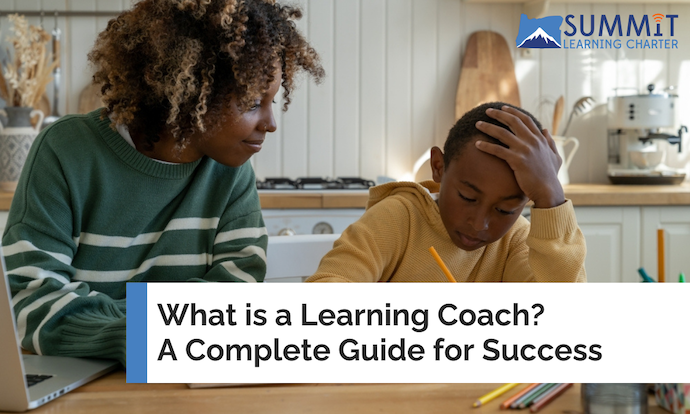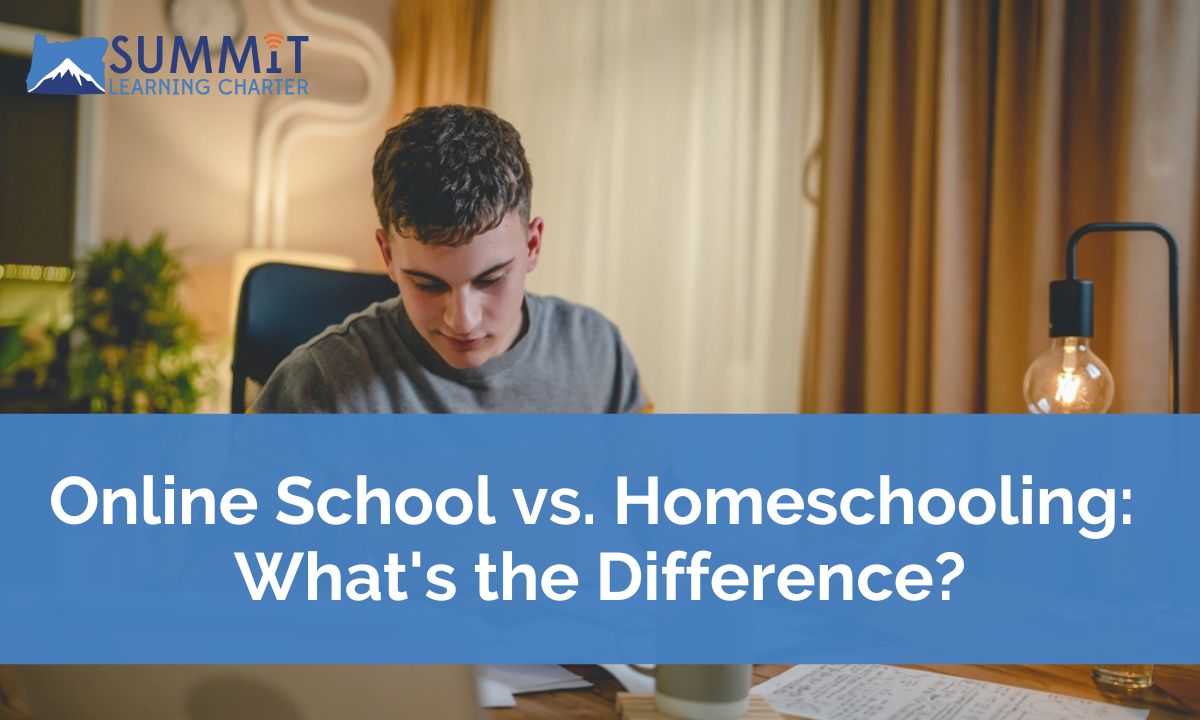
What is a Learning Coach? A Complete Guide for Success
Considering virtual learning for your child? You’ve probably come across the term learning coach. You might have an idea of what it means just from reading it, but what exactly does a learning coach do?
In the virtual learning model, learning coaches aren’t teachers, but they still play a crucial role in supporting students at home.
In this guide, we’ll walk you through the key responsibilities of a learning coach, the time commitment involved, and how to be a great learning coach.
What is a learning coach?
A learning coach is a parent or guardian who actively supports a student’s online learning journey.
Teachers are responsible for teaching lessons, answering questions, grading assignments, and tracking progress.
But a learning coach?
They make sure students stay on track. They help them stay engaged, manage their time, and build strong study habits – all without completing their work for them.
Think of a learning coach as a mix of a guide, a mentor, and a cheerleader, always there to support students and provide guidance.
Okay, so what exactly does a learning coach do?
The role of a learning coach can vary depending on the school and the student’s grade level. Younger students need more hands-on support, while older students are usually more independent. But no matter the grade, all learning coaches take on these responsibilities:
- Provide structure: Staying organized is half the battle! Learning coaches help students set daily schedules, track assignments, and stick to a routine.
- Encourage independence: One of the ways remote learning prepares students for remote work is by teaching them to be disciplined and manage their time effectively. Learning coaches promote those skills by helping students take ownership of their learning.
- Stay in touch with teachers: Learning coaches don’t replace teachers, but they do collaborate closely with them. Regular check-ins help track attendance and progress, and adjust learning strategies when needed.
- Create a positive learning environment: Not just by motivating students and encouraging breaks when needed, but also by creating a good learning environment.
- Review assignments, exams, and tests: Teachers handle grading assignments and tests, but a learning coach will review them to stay on top of how students are progressing.
- Set goals and milestones: Students need clear, attainable goals to stay on the path toward success. Learning coaches help students create clear and specific objectives.
Related: 8 Characteristics of a Great Virtual School Learning Coach
How much time does it take to be a learning coach?

The time commitment depends on your student’s grade level and learning style. Here’s what you can expect as a learning coach depending on your student’s grade level:
Elementary School (3-5 Hours Per Day)
Expect to be actively involved throughout the school day. You’ll guide your student and answer their questions. Since elementary students are still learning time management skills, they’ll also rely on you to help them stay organized.
Middle School (1-3 Hours Per Day)
At this stage, students are becoming more independent, but they still need occasional check-ins to stay on track. You’ll help reinforce time management skills and provide guidance when they get stuck.
High School (1-3 Hours Per Day)
Despite being mostly self-sufficient, high school students still benefit from support. Your role will be to monitor attendance, keep them motivated to achieve their goals, and help them build strong study habits as they prepare for life after graduation.
Strategies to Be an Effective Learning Coach
Here are some strategies that will help you feel more confident in your journey to support your student’s success.
1. Guide Your Student Without Giving Them Answers
Your primary responsibility is to support your student, and the best way to do that is by guiding their learning. Instead of giving your student answers, use guiding questions to help them figure things out for themselves. You can ask questions like “How do you think we can solve this problem?” or “Where could we look this up together to learn more?”
This approach helps students understand that they have the tools to find the answers to their own questions, while also teaching them how to work independently.
2. Leverage Time Management Tools & Encourage Breaks
Time management is one of the biggest challenges for virtual learners. Fortunately, there are plenty of tools you can use to help. Apps like Forest and StayFocusd are great to limit distractions and keep your student focused. You can also use digital planners and to-do lists to make sure daily priorities and tasks are clear.
But staying focused isn’t just about limiting distractions. Everyone performs better when they have time to rest and recharge, and students are no different. Taking short breaks every 30-60 minutes will help your student unwind and focus again. Some break ideas include:
- Going for a quick walk;
- Doing some light exercise, like jumping jacks or stretching;
- Eating a healthy snack;
- Drawing or doodling;
- Taking a 10-15 minute play break.
3. Ask for Help When You Need It
No one expects teachers to have all the answers, and the same goes for learning coaches. When you hit a roadblock, don’t be afraid to explore online resources like Khan Academy or YouTube explainer videos. You can also ask your student’s teachers for help.
Whatever route you choose, do it together with your student – it’s a great way to model problem-solving and show them that it’s okay to ask for help.
4. Know What to Do When Your Student Is Struggling
Like you, your student will struggle sometimes. It’s important to know what to do in these situations.
When your student gets stuck, there are a few different ways to help. First and foremost, be sure to always practice active listening. This will help your student feel heard and supported and will also give you a better grasp of what they’re struggling with. Offer encouragement and reframe the situation as a learning opportunity. Alternatively, you can suggest taking a break or tackling the problem with a different approach, like online research or watching a video together.
Finally, you can always circle back to number 3 on this list and ask for help!
5. Tailor Your Support to Your Student’s Learning Style
When students learn in ways that suit them, they better absorb and retain information. Spend some time getting to know your student’s learning style (visual, auditory, reading/writing, and kinesthetic) and tailor your support accordingly. For example, maybe your student prefers to watch videos, talk through problems, or learn through hands-on activities.
Prioritize your student’s learning style to ensure that learning is enjoyable for them. Also encourage them to understand their learning style for themselves so they know to learn independently when they get into the higher grades.
How can you be the best possible learning coach?
With a little dedication, being a great learning coach isn’t hard.
Your job is to support your student – they’re the stars and you’re guiding them on their journey. Be patient and empathic. It’s the best way to keep students motivated through challenges and comfortable asking for help when needed.
Help your student stay organized, but encourage them to take charge of their schedule and time management. Remember to check in with teachers often and create opportunities to connect with classmates.
Finally, be flexible. One of the biggest advantages of virtual learning is the flexibility. Step in or step back as needed, and feel free to shift plans to accommodate unexpected obstacles.
Read more: 5 Ways to Be The Best Learning Coach for Your Virtual Student
Being a Learning Coach at Summit Learning Charter

Being a learning coach isn’t about having all the answers. Instead, it’s about being someone your student can count on. Someone to help them stay organized and cheer them on as they grow.
At Summit Learning Charter, we give our learning coaches everything they need to excel. They get personalized support from a dedicated homeroom teacher who helps them navigate curriculum choices. From online programs to assessments and attendance documentation, we provide all the resources they need.
Learn more about academics at SLC and contact us today with any questions or for more information.



